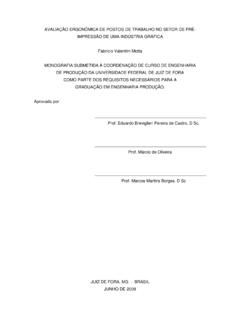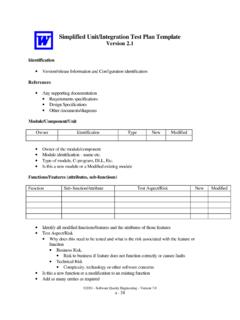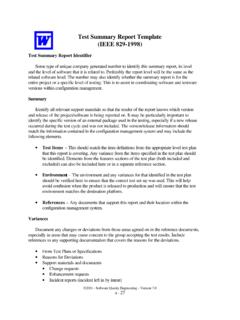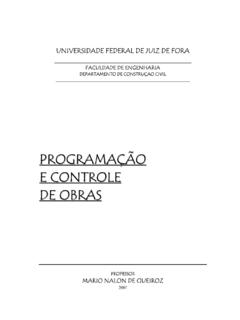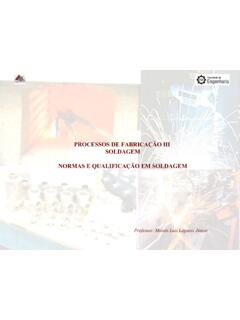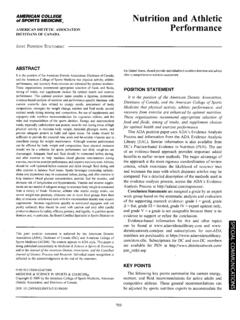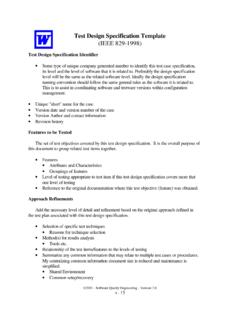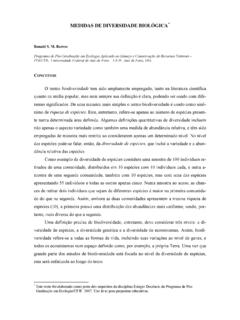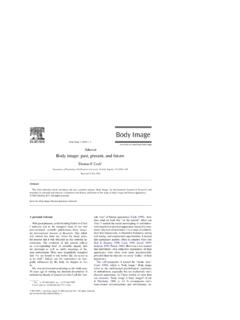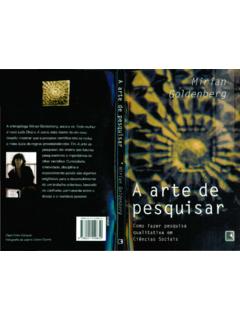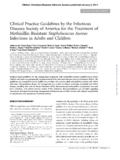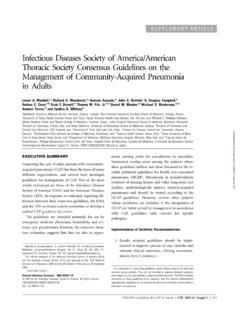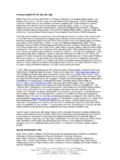Transcription of Antimicrobial resistance and disinfectants susceptibility ...
1 Journal of Microbiology and Antimicrobials Vol. 2(7), pp. xx-xx, October 2010 Available online ISSN 2141-2308 2010 Academic Journals Full Length Research Paper Antimicrobial resistance and disinfectants susceptibility of persistent bacteria in a tertiary care hospital Maria Lucia Morcerf Bouzada1, Vania Lucia Silva1, Felipe Augusto Sa Moreira1, Girlene Alves Silva2 and Claudio Galuppo Diniz1* 1 Department of Parasitology, Microbiology and Immunology, Laboratory of Bacterial Physiology and Molecular Genetics, Institute of Biological Sciences, Federal University of Juiz de Fora, Juiz de Fora/MG,36036-900, Brazil.
2 2 Department of Applied Nursing, School of Nursing, Federal University of Juiz de Fora, Juiz de Fora/MG, 36036-900, Brazil. Accepted 22 October, 2010 It is well known that putative pathogenic bacteria are ubiquitous and widely distributed in the hospital environment. This study aimed to detect bacterial persistence in the nosocomial environment (different critical areas of the hospital) after mopping by the cleaning staff. susceptibility patterns to Antimicrobial drugs and disinfectants commonly used in health services were also investigated by disk diffusion and agar dilution tests.
3 Rinse water from mops was processed for isolation of Enterobacteriaceae (GNR), non-fermenting Gram-negative rods (NFGNR), coagulase-negative staphylococci (CNS) and enterococci (ENT). Microorganisms were biochemically characterized and 547 strains were recovered. Only CNS and NFGNR were isolated in all critical areas. Overall 67% of the isolated bacteria were resistant to more than three drugs, being considered as multiresistant. disinfectants were effective in concentrations ranging from to 1%. Hospitals provide reservoirs of multiresistant microorganisms borne by patients and staff, but the hospital environment may be an important repository.
4 Preventing the spread of relevant bacteria depends on the quality of hospital routine cleaning services. Monitoring bacteria susceptibility to antimicrobials and disinfectants may help the management of nosocomial infections. Key words: Nosocomial environment, hospital cleaning, Antimicrobial drugs, disinfectants . INTRODUCTION Hospital infections, a severe public health issue, are widespread and have high economic and social impact (Blanc, 2004). Most infections may be related to unbalanced microbiota and host defense mechanisms, but undoubtly hospital environments are a great source of *Corresponding author.
5 E-mail: Tel/Fax: + 55 32 3229 32 13. Abbreviations: GNR, Gram negative rods from the Enterobacteriaceae family; NFGNR, non-fermenting gram negative rods; CNS, coagulase-negative staphylococci; ENT, enterococci. potentially pathogenic microorganisms (Bryce et al., 2007). Several bacteria are associated to nosocomial infections, mainly representatives of Gram negative rods from the Enterobacteriaceae family (GNR), non-fermenting Gram-negative rods (NFGNR), Gram positive cocci Staphylococcus, especially coagulase-negative species (CNS) and Enterococus (ENT) (Sader et al.)
6 , 2001). Antimicrobial resistance turns into a complex both ecological and clinical problems when considering the genetic variability in microorganisms. Its contention is one of the greatest challenges of the 21st century, and originates appeals from several international Health Organizations asking for regional data in bacterial susceptibility patterns, especially for strains of nosocomial circulation (ASM, 2009). Microorganisms may be associated to several biological materials in the hospital environment such as floors, walls, ceiling, doors, windows, electro-electronic equipment and specific hospital articles in use for assistance to patients (Rossi et al.
7 , 2008). Thus, the quality of cleaning services is an important condition in the prevention and control of microbial spread, as well as the type of disinfectants used to diminish risks of cross infections during healthcare assistance (Kramer et al., 2006). The most commonly used chemical agents in the nosocomial environment for high level of disinfection are glutaraldehyde, the association of peracetic acid/hydrogen peroxide ( to 2%) and sodium hypochlorite (1%). For medium level of disinfection the products generally used are sodium hypochlorite ( to ), iodofors, phenol derivatives, 70% ethyl alcohol and 92% isopropyl alcohol.
8 Quaternary ammonium compounds and low concentration sodium hypochlorite ( ) are used for low level cleaning and disinfection (Rutala and Weber, 2007). Identifying microorganisms and their susceptibility patterns to Antimicrobial drugs and nosocomial disinfectants could be useful to trace origins and determine the persistence of bacteria potentially associated to hospital infections. This study aimed to evaluate bacterial persistence in the nosocomial environment of the University Hospital, University of Juiz de Fora, Brazil, in the rinse water after mopping by the cleaning staff and to determine the susceptibility patterns of the isolated bacterial strains to Antimicrobial drugs and disinfectants commonly used in health care routine protocols.
9 MATERIALS AND METHODS Isolation and identification of bacterial samples One hundred aliquots of 2 mL of the water used to rinse mops at the University Hospital of Juiz de Fora were collected and processed for the selective isolation of GNR, NFGNR, CNS and ENT. The water aliquots were collected in two sets of fifty, as duplicates within a six months interval, from different critical areas of the hospital, which were: surgical and intermediary surgical centre, intensive care unit, bone marrow transplant unit, pediatric isolation unit, low birth weight newborn infirmary, lactarium, male and female infirmary of infectious diseases, pharmacy, clinical analysis and pathological anatomy laboratories, kitchen, laundry and sterilized material centre.
10 The routine wet swapping is usually made with a mop wetted with water and neutral detergent, under the supervision of the hygiene and cleaning service . The collected material was serially diluted and inoculated into different culture media. From 3 to 5 bacterial colonies were isolated from each culture medium. Hypertonic Manitol Agar (Himedia Laboratories, Mumbai, India) was used for the isolation and presumptive identification of CNS. The isolated bacteria were identified according to established methodology through the morphotinctorial and biochemical characteristics (MacFaddin, 1977).
